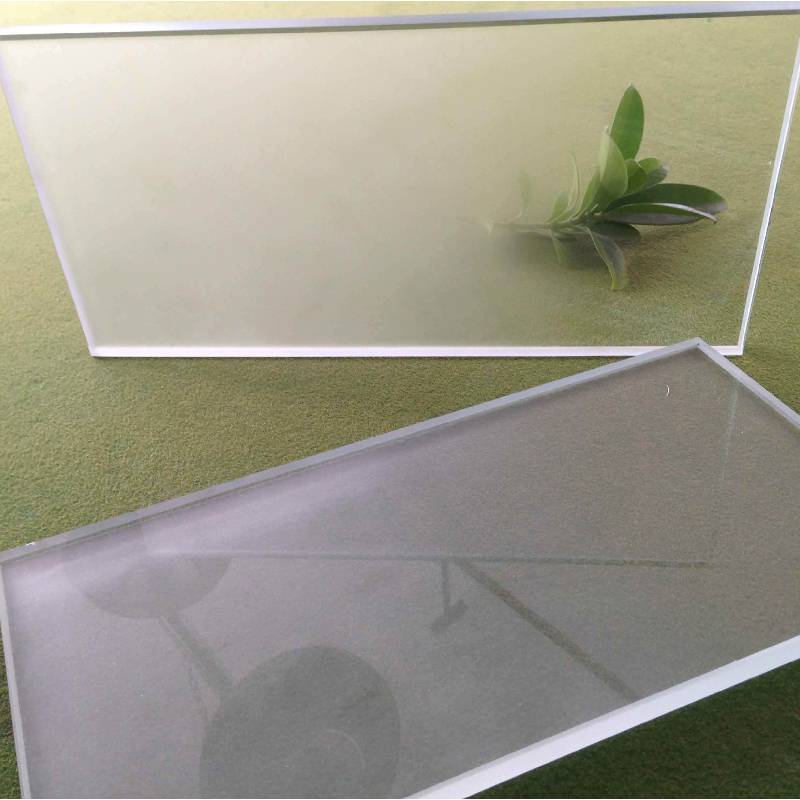

The Fascinating World of One-Side Mirror Glass
In the realm of glass technology, one-side mirror glass stands out both in function and aesthetic appeal. This innovative material has captured the interest of architects, interior designers, and artists alike, thanks to its unique properties and versatile applications. As we delve into the world of one-side mirror glass, we will explore its characteristics, uses, and the impact it has on modern design.
Understanding One-Side Mirror Glass
One-side mirror glass, also known as a semi-reflective or one-way mirror, is a special type of glass that reflects light on one side while allowing light to pass through from the other side. This optical property stems from a thin layer of metal oxide or aluminum that is applied to the glass surface. The result is a reflective surface that can maintain an illusion of privacy on one side while permitting visibility from the other—a feature that has significant applications in various fields.
Applications in Architecture and Design
One-side mirror glass is widely used in architecture and design, especially in the construction of buildings and interior spaces. One of its most prominent uses is in office windows, where it can provide a degree of privacy for those inside while allowing natural light to enter. This is particularly useful in urban environments where large glass facades are common. The reflective quality of the glass helps to reduce glare and heat gain, making it an energy-efficient option for modern buildings.
In addition to office spaces, one-side mirror glass has found a place in residential design. Homeowners are increasingly opting for this type of glass in their windows, patio doors, and even room dividers. Its ability to create a seamless connection between indoor and outdoor spaces while offering privacy is highly valued in contemporary home design.
Artistic Applications

The artistic realm has also embraced one-side mirror glass. Artists and designers utilize its reflective properties to create stunning installations that play with light and perception. For instance, in contemporary art galleries, one-side mirror glass can be used to create interactive installations that invite viewer engagement. Visitors can see their reflections blended with the artwork, creating a dynamic experience that blurs the line between observer and subject.
Moreover, artists often use this glass in sculptures that challenge perceptions of space and depth. The reflective surface can create illusions that alter the viewer's understanding of the surrounding environment, making it a powerful tool for expression and exploration.
Challenges and Considerations
While one-side mirror glass offers numerous advantages, it is not without its challenges. For instance, the effectiveness of the mirror effect can vary depending on the lighting conditions. In brightly lit environments, the reflective properties are enhanced, while in low-light conditions, the glass may appear more transparent, compromising privacy. Therefore, its use requires careful consideration of the surrounding lighting and the intended function of the space.
Additionally, one-side mirror glass can be more expensive than standard glass options. Its specialized manufacturing process and the application of reflective coatings contribute to higher costs. However, many architects and designers find that the aesthetic and functional benefits justify this investment.
Conclusion
One-side mirror glass is a remarkable innovation that has transformed both architectural design and artistic expression. Its unique combination of reflective and transparent properties provides an array of possibilities for creating spaces that prioritize both functionality and aesthetics. As modern design continues to evolve, one-side mirror glass will undoubtedly play an increasingly important role in how we envision and interact with our environments. Whether in bustling cities or tranquil homes, this fascinating material has become a vital tool in shaping the landscapes of our lives. As we look toward the future, its applications will likely expand, continuing to inspire creativity and innovation in ways we have yet to imagine.